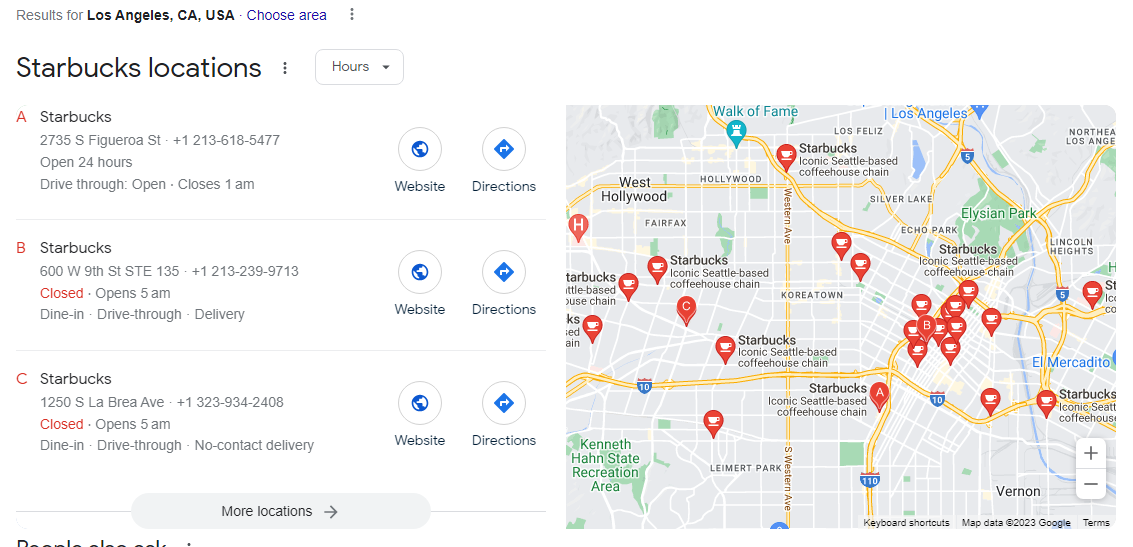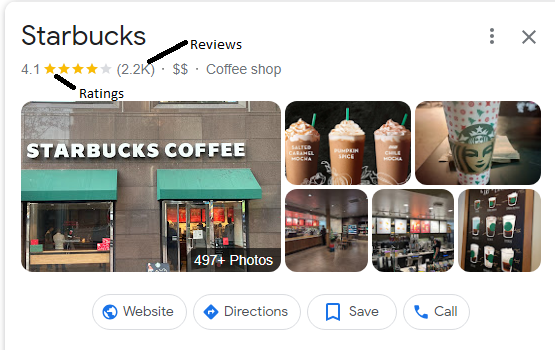Local SEO for Multiple Locations- How it Works, Benefits & Mistakes to Avoid
December 8, 2023
Sarvesh Bagla
What has changed from the original post:
- Increased targeted keyword density
- Added missing subheadings
- Updated information to reflect current changes
- Improved content structure for better readability
- Linked to internal and external links to establish content trustworthiness
Summary: This article goes through how to implement a local SEO strategy in multiple locations. It covers what local SEO is and the mistakes to avoid.
Companies with multiple locations face several challenges while establishing a prominent online presence. Usually, local SEO has a lot to do with how customers search for businesses online. Customers tend to look for companies that can solve their immediate problem, which makes sense for them to look at local companies first.
This is what makes this multi-local SEO guide so important. Besides ensuring visibility, credibility, and sustainable growth, multi-local SEO ensures your business stands out when your customers need to find and buy from you.
In this guide, you will learn everything you need to know about how to appear in multiple city searches with one website and the mistakes to avoid while creating location-based SEO strategies.
What is Multi-Location SEO and How it Works
Multi-location SEO is a specialized digital marketing strategy for businesses operating in multiple locations. It simply applies a local SEO strategy for each location your business is in. For example, if you search for Starbucks in Los Angeles, in the search results, you will get information about all the nearby branches in the city. The same applies when searching for an outlet in New York or New Orleans.

Multi-location SEO focuses on optimizing the online presence of each physical location by factoring in its unique characteristics. Localizing the search results lets local customers get relevant information about businesses nearby. It also helps search engines differentiate between different locations. So, someone in New York won’t get a recommendation to a Starbucks in LA or New Orleans.
Whether you have 2 or 10 locations, it’s vital to present search engines with the right information about each location so they can present the right one to the people who need it.
Additional Information: What is SEO
Benefits of Multi-Location Local SEO
With about 98% of consumers using the internet to find out more about local businesses and about 42% of them eventually visiting the business, it pays to have a multi-location SEO guide for your business.
1. Increased Local Visibility
Local SEO is the best way to show up on local searches and drive traffic to your business. SEO for multiple locations offers targeted exposure so your business features in local searches. This way, you also feature more on platforms such as Google Maps, making it even easier for users to find you.
2. Higher Local Search Rankings
Search engines such as Google offer location-based search results. For instance, if a user searches for a ‘clothing store near me’, they get a list of outlets close to their location. They also get additional information such as the business’s location, contact information, opening hours, directions to the store and links to their websites. By optimizing your SEO strategy, you can rank higher in local search queries, allowing more customers to find your business.
3. Improved Online Reputation
A good online reputation shows your commitment to customer satisfaction which helps build credibility and improves your online reputation. Local SEO encourages users to leave reviews about your outlet. Reviews tell new customers what others think about your business, which could immensely boost your overall reputation. It also offers a way to manage the reviews so you can address negative feedback.
4. Enhanced Customer Trust and Credibility
Location-based SEO enhances the legitimacy of each business location by presenting accurate and consistent information. This means data such as your business name, opening hours, address and contact information is consistent across all your online platforms in relation to the user’s geographical location. By providing reliable and verifiable information, your business is more likely to be viewed as a trustworthy and credible organization by both users and search engines.
5. Increased brand awareness
When users search keywords related to your business, they get directed to your pages in the search results. For instance, let’s assume you have a new shop selling dresses in Boston. If a user is looking for dress shops in Boston, Google will send them pages optimized for that location. If you have properly optimized your business, your business will be among those shown, which will increase your brand awareness as a new business.
6. Better Conversion Rates and Revenue
Local SEO ensures you reach more users actively looking for products or services related to your business. With more leads, you may get more conversions, increasing your revenue. It makes sense to promote your business locally by including location-specific deals, events, and promotions, driving up revenue.
How to Set up Local SEO for Multiple Locations
With more users turning to online searches whenever they want to look up or purchase something, you must establish an online presence. Mastering the art of Local SEO ensures your business is visible, credible and ultimately successful. Here’s how to target multiple cities without hurting your SEO.
1. Create separate location-specific landing pages
One of the biggest mistakes businesses make is trying to rank their homepage for multiple locations or put all their locations on one page instead of creating a separate landing page for each one. While this might seem like a good idea, it hurts your overall SEO ranking, as what is relevant in one location might not suit another area. This is also outrightly lazy in the eyes of Google and other search engines.
Having dedicated SEO location landing pages for each location creates a tailored experience for your users in those areas. These pages act as digital storefronts, allowing you to include unique information relevant to a specific location.
This could be anything from opening hours, addresses, contact information and services offered. For example, if you have a clothing store in Texas and another in New Orleans, the landing pages for these locations might be:
- www.yourdomain.com/locations/texas
- www.yourdomain.com/locations/neworleans
Here’s an example of how Shein implements multi-location local SEO in their UK and US sites.

The next step is to optimize these pages so they are discoverable by search engines. This includes creating localized content for each location and using location-specific keywords. Your best option is to apply a local business schema markup to boost your SEO rankings. Failing to optimize your page reduces your visibility, hinders lead generation and negatively affects conversion rates.
Each landing page must have:
- The business’s name, address and phone number (NAP).
- Geo-specific content such as staff information, reviews or testimonials from other local customers.
- Directions to your store location, including landmarks or street names.
- An embedded Google Map.
- Geo-specific title tags and meta descriptions.
- Images of the business.
Creating separate location-specific landing pages isn’t about duplicating your home page with minor tweaks. It is a strategic way to provide a personalized and relevant user experience to maximize your SEO efforts.
2. Optimize your Google My Business Profile
Start by signing up for a Google My Business Profile. This creates a free business profile for your store where users can get a first impression of your company and information on who you are. Here, you can create listings for each location and add any relevant information.

To optimize each listing:
- Make sure you claim and verify each listing for each location.
- Provide accurate and consistent business information. This includes the business name, operating hours, links to social media accounts and at least one category representing your business line. For example, a clothing store can include a ‘fashion accessories store’ as its category.
- Revise your Google business profiles and include relevant location-specific keywords.
However, if your locations serve different purposes, creating different profiles for each one allows you to reflect the differences in their areas of operation.
A Google business profile gives you valuable information about your listings’ performance. You get an inside look at the views, searches and actions taken by users. You also learn more about how customers found your profile, how they interacted with it, where they found you on Google, search queries that lead them to your profile, what your business is known for and more.
All this information can help you optimize your profile further to make it easier for others to find you.
3. Manage your Local Citations
With multiple locations, your business will be mentioned in different online directories. Search engines look at how your NAP appears across the internet. Using this information, search engines determine how you will rank in local searches. If there are any inconsistencies, it can affect your trustworthiness and hinder your SEO efforts. As such, your NAP must be consistent for each location.
Start by looking for and fixing your business listing on popular online directories such as Yelp, Yellow Pages, Foursquare, or Bing Places. Do the same for any local or industry directories you might appear in. This can involve creating or updating listings or addressing duplicate listings.
Lastly, implement and maintain a citation management strategy that verifies and maintains NAP consistency across the digital landscape. You can even leverage industry-specific or location-specific directories. This will send audiences interested in your products or services your way.
4. Customer Reviews and Ratings
Businesses with multiple locations often focus on getting reviews and ratings for their business, failing to focus on the individual locations. This can negatively affect your local SEO efforts.
Google displays customer reviews and ratings on your Google business profile as shown below.

To attract new customers, ask for positive reviews and address negative ones. Without good reviews, potential customers may not click on your business listing. When dealing with negative reviews, respond quickly in a calm manner.
Remember, don’t blame the customer or use inflammatory language. Instead, work as fast as possible to resolve their grievances. To encourage good, honest reviews for each location, including a call to action on the individual location pages asking your clients to leave a review.
5. Local Link Building
Backlinks are one of the most important SEO factors. With multiple locations, you need to build backlinks to each landing page on your website. You can do this by:
Collaborating with locals – Actively participating in local events, sponsorships, and partnerships with the community. This fosters a positive brand image and opens up link-building opportunities. People are more likely to link to content that showcases a business’s positive impact on the community. Adding links to these community pages or local events enhances your page’s local relevance. It also strengthens community ties, builds authority, and boosts your local search rankings.
Create localized content – Content specifically geared towards local topics, events or industries that offers value to your local audience. This could attract links from local bloggers, influencers and community members.
Mistakes to Avoid When Setting up Multi-location SEO
Implementing a local SEO for multiple locations involves quite a bit of work, and mistakes are bound to happen along the way. Here are some of the common pitfalls to avoid.
- Inconsistent NAP Information
- Neglecting your Google Business Profile Optimization
- Ignoring Customer Reviews
- Overlooking Local Keyword Optimization
- Lack of Location-Specific Content
- Failing to Monitor and Adjust Strategies
- Not including Images or Videos
Optimizing For Multiple Locations
Having a multi-location SEO guide is crucial for your business if you want more visibility, conversations, and sales. To optimize your local SEO, ensure you work on your Google business profile, create localized landing pages and manage customer feedback. Remember, not to overlook local keyword optimization, keep your NAP consistent, and include images and videos to boost user engagement.
If you have a question on how to optimize multiple local business locations, let us know in the comments. We would be happy to help. Alternatively, Contact us and let’s set up a free consultation.